We gardeners choose our plants carefully, curating the heights and widths of plants and visualising how they’ll fit together in our gardens when fully grown. For most garden plants it’s easy to find information on their dimensions, from labels, internet searches or books. But when it comes to the most popular plant in the vegetable patch, the tomato, we rarely consider finding the right fit for our garden, focusing on fruit size and colour, sometimes considering the time to harvest and usually our intended use, from salads to sauces. Tomato labels and seed nurseries too often don’t supply enough information for use to choose our plants wisely.
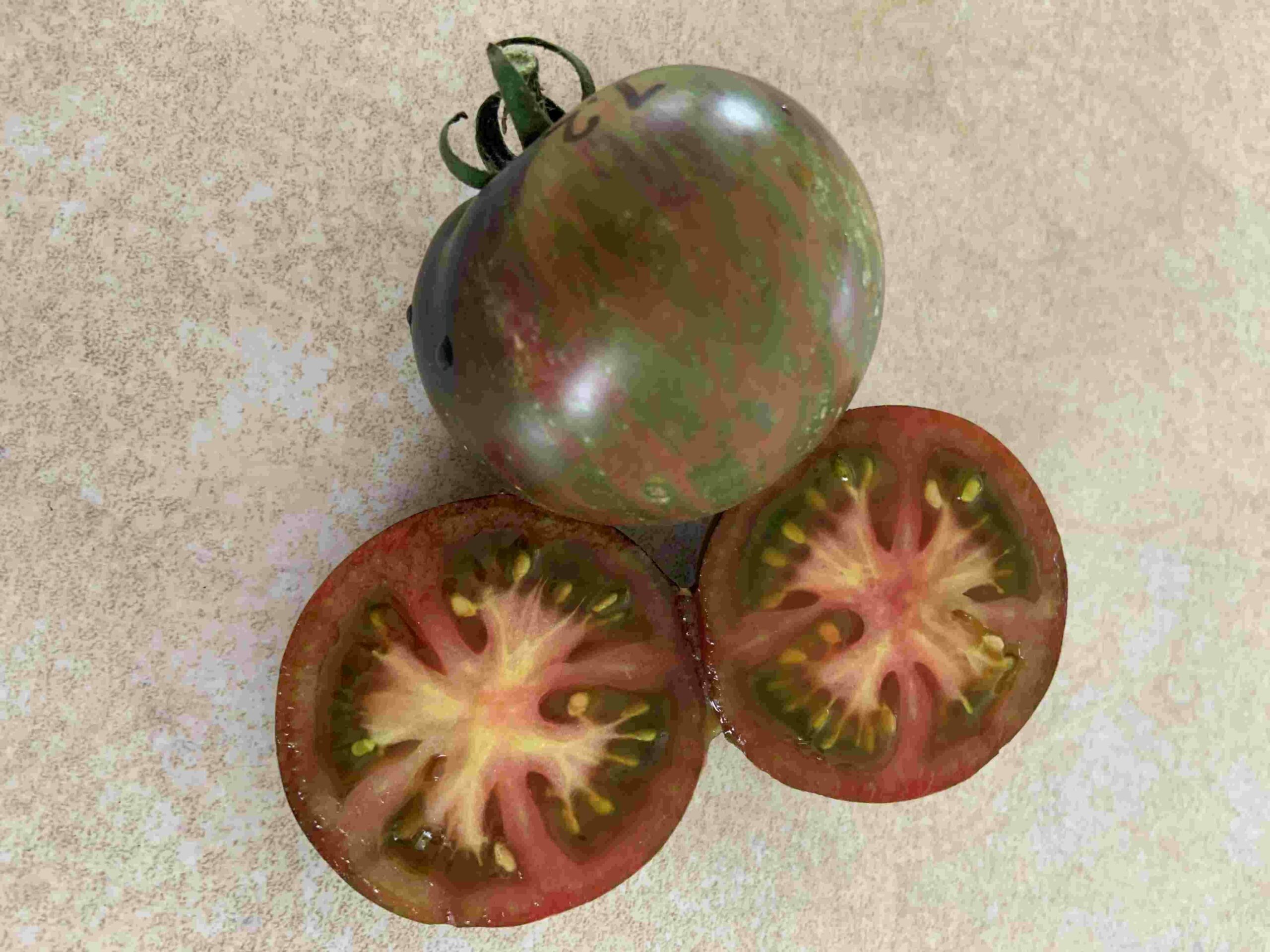
‘Tomato Know Sow Grow Feast’ the book
Penny Woodward helped to redress this when she co-wrote ‘Tomato Know Sow Grow Feast’ in 2018. As her horticultural writing partner on this project, I covered ‘sow’ and ‘grow’, while Penny covered ‘know’, describing over 200 heirloom tomato varieties more readily available in Australia, out of the 500 estimated varieties in Australia. Janice Sutton covered ‘feast’ so we could all be inspired to use our tomatoes in new ways. Whether you borrow the book from your local library or buy a copy yourself, Penny’s descriptions are a fantastic resource when choosing the right variety of tomato for your kitchen and garden, with information on the size of plants and time to harvest as well as the size, shape, colour, flavour and uses of the fruits. Of course, being heirloom vegetables, they have rich histories, and these are also included.
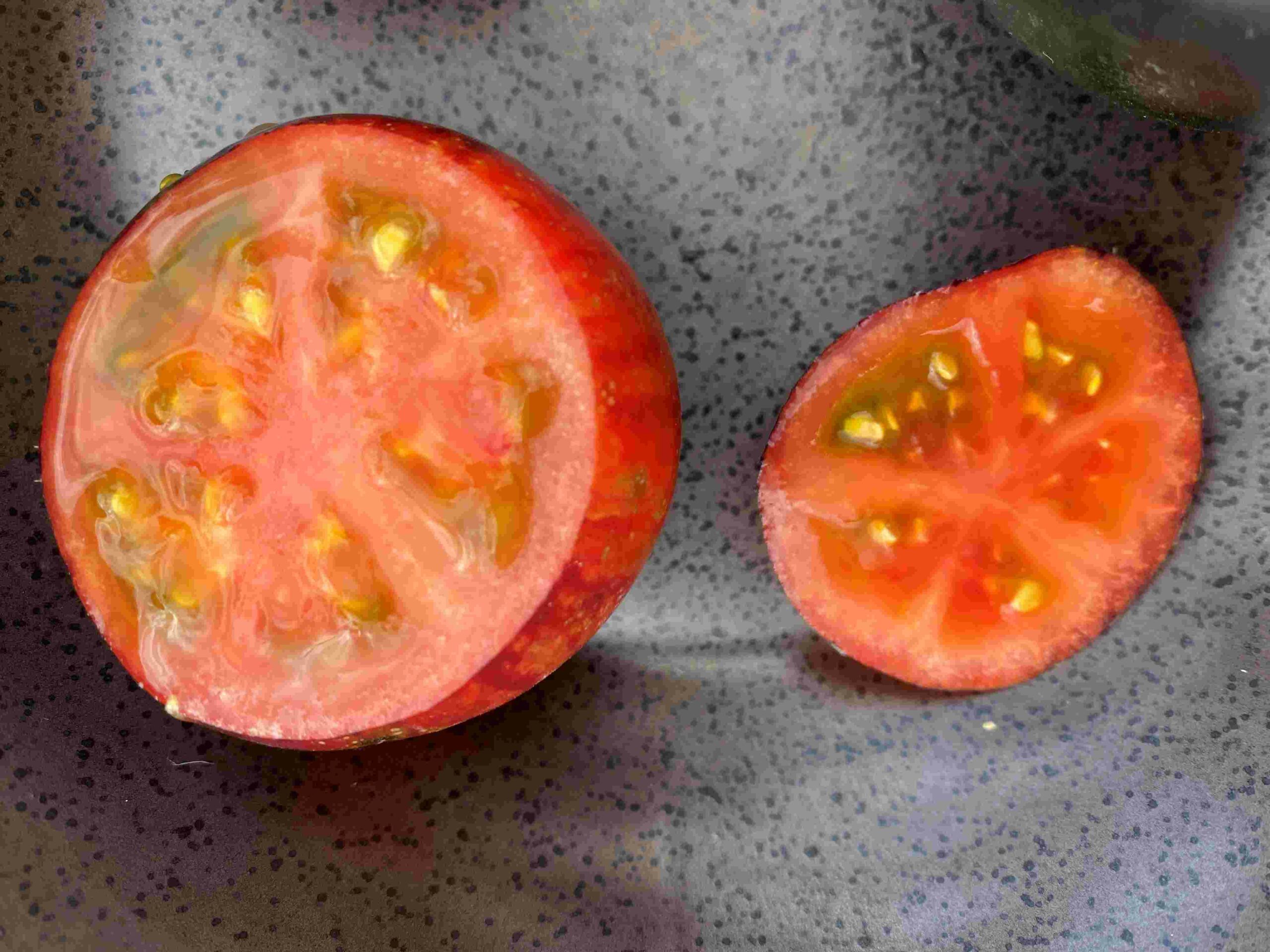
However, one of the most exciting things that came out of that book for me was learning about the Dwarf Tomato Project, and what these new modern heirlooms could offer modern gardeners. Most vegetable gardeners now grow in raised beds, usually 600 mm high, and there are many people gardening in small spaces. Planting an indeterminate or vining tomato into small gardens or raised beds, when these plants can reach up to 2 m high, is complete folly, yet many people are still doing so, mainly because they are unaware there are alternatives available.
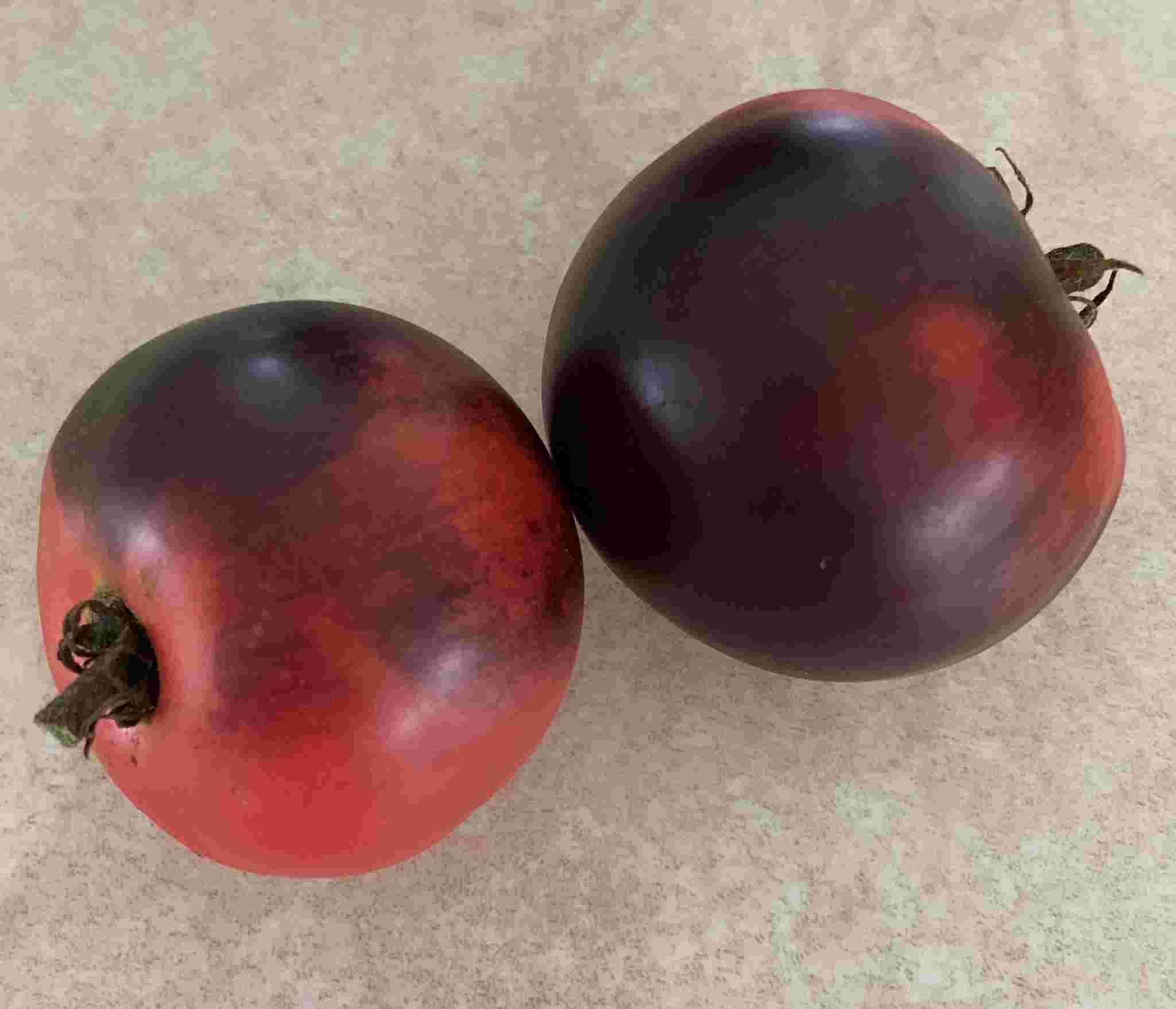
Imagine if you could grow neat, sturdy plants, with terrific flavours and colours?
Developed by two tomato growing enthusiasts, Patrina Nuske-Small in Australia, and Craig Le Houllier in USA, with contributions by many volunteer breeders, the DTP has for over 10 years been breeding new and exciting tomatoes, retaining the compact size and growth habits of dwarf tomatoes, but infusing the often boring fruits with the colour and excitement of indeterminate, usually triffid-like tomatoes. Due to quarantine reasons, the seeds are not sent back and forth between countries but are for sale in their respective hemispheres. Even better, all DTP seeds are OSSI (Open Seed Source Initiative) pledged, meaning that their sale can’t be restricted in any way. They can be sold, as many of them are through online seed merchants, or you can give them away, but no-one can claim ownership or plant variety rights.
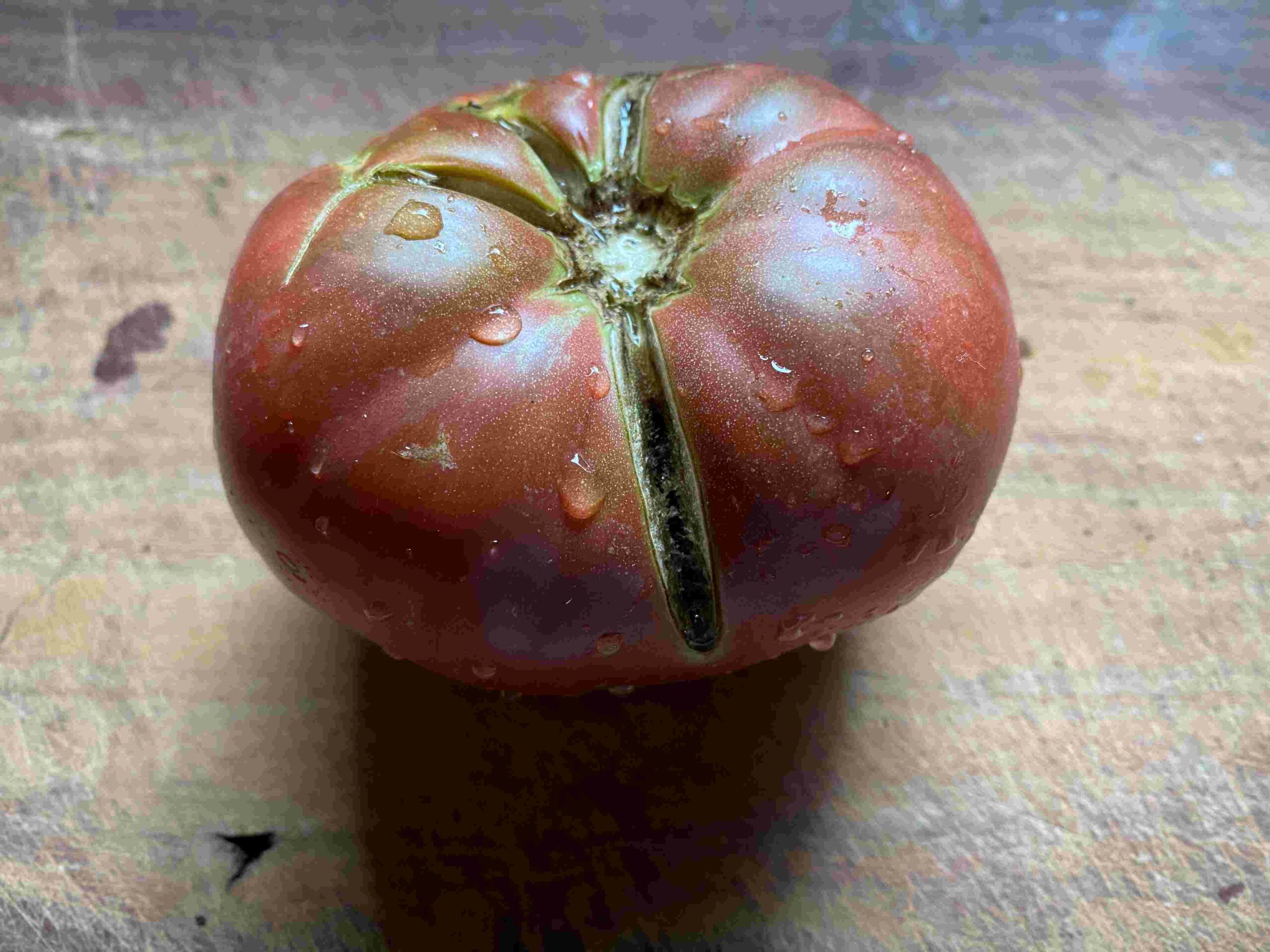
Tomatoes offered by the DTP can reach up to 1.4 m high, such as Barossa Fest, and although the taller plants have sturdy stems they do need staking. Some are quick to harvest, such as Boronia, or Dwarf Pink Passion, producing in 65 days, or Bundaberg Rumball in 60 days. Some have large fruits such as Adelaide Festival, Dwarf Black Angus or Dwarf Orange Cream with fruits weighing 300 grams or more, or Uluru Ochre with fruits over 400 grams. Others have smaller fruits, such as Kangaroo Paw Brown, Red, Yellow or Green varieties. The range covers red, pink, yellow, white (the flesh inside), orange, green when ripe, brown, and purple-black fruits, striped and bicolour fruits. Shapes included round, some flatter, some smooth and others with pronounced ribs.
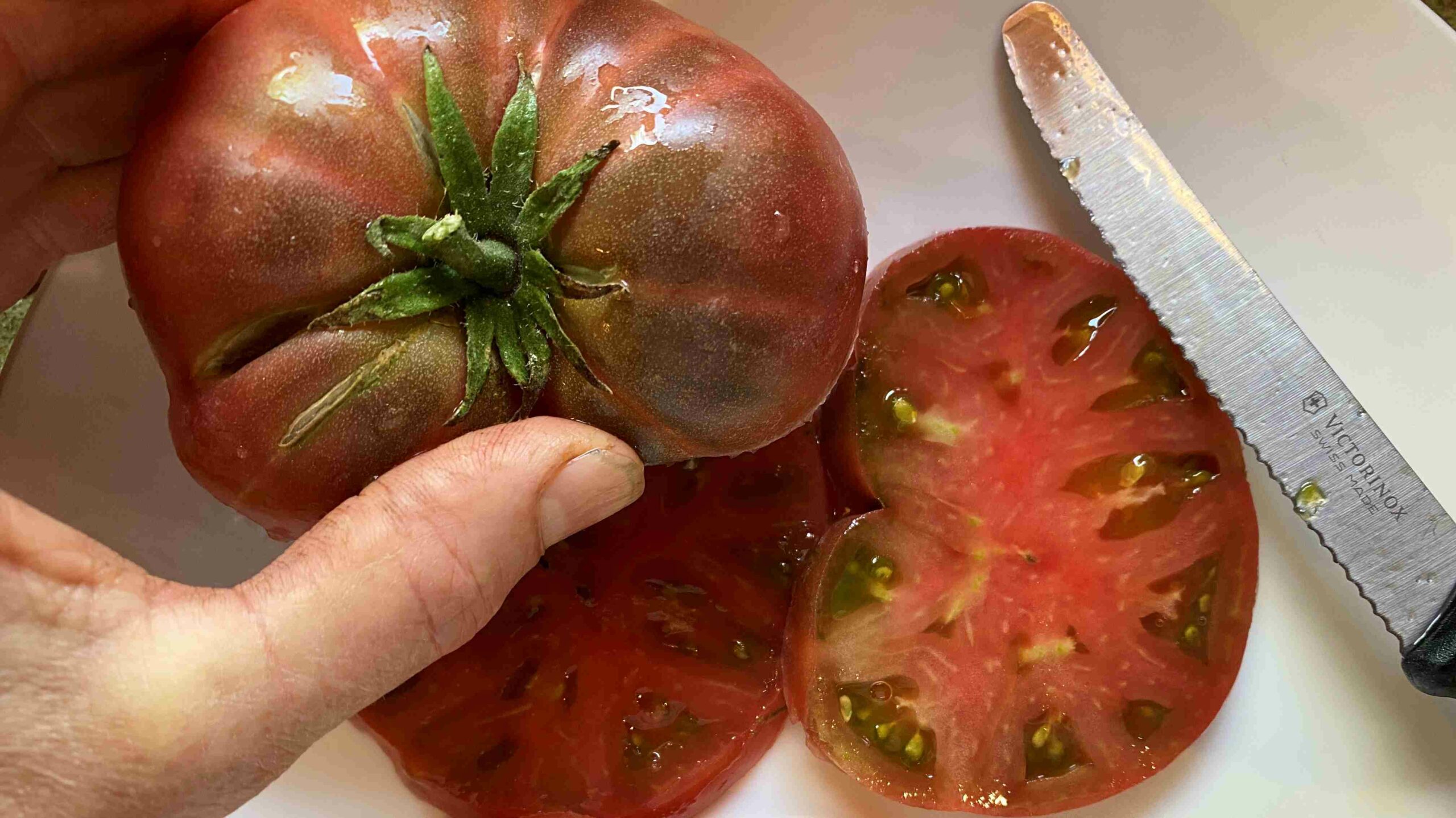
My hands down favourites offered by the DTP are a group called the Gondwana series, developed by Patrina Nuske-Small rather than the whole DTP team. Simple, round-shaped, small to medium sized fruits, the Gondwana fruits pack a punch and have luscious colours and flavours, all with a pronounced umami accent. They all have various amounts of purple-black skin colouration, deepening on the side of the fruits exposed to the sun, due to the presence of anthocyanins like those in blueberries, with the same healthy antioxidant properties. Interesting to note that their leaves too are blushed with dark purple. When the fruits are sliced open they reveal luscious red, green, and yellow flesh, the latter being perhaps the most surprising. If the whole fruit turns purple-black, and there’s no other exterior colour showing, check for ripeness by a gentle squeeze of the fruits, which are slightly soft when ready for picking.
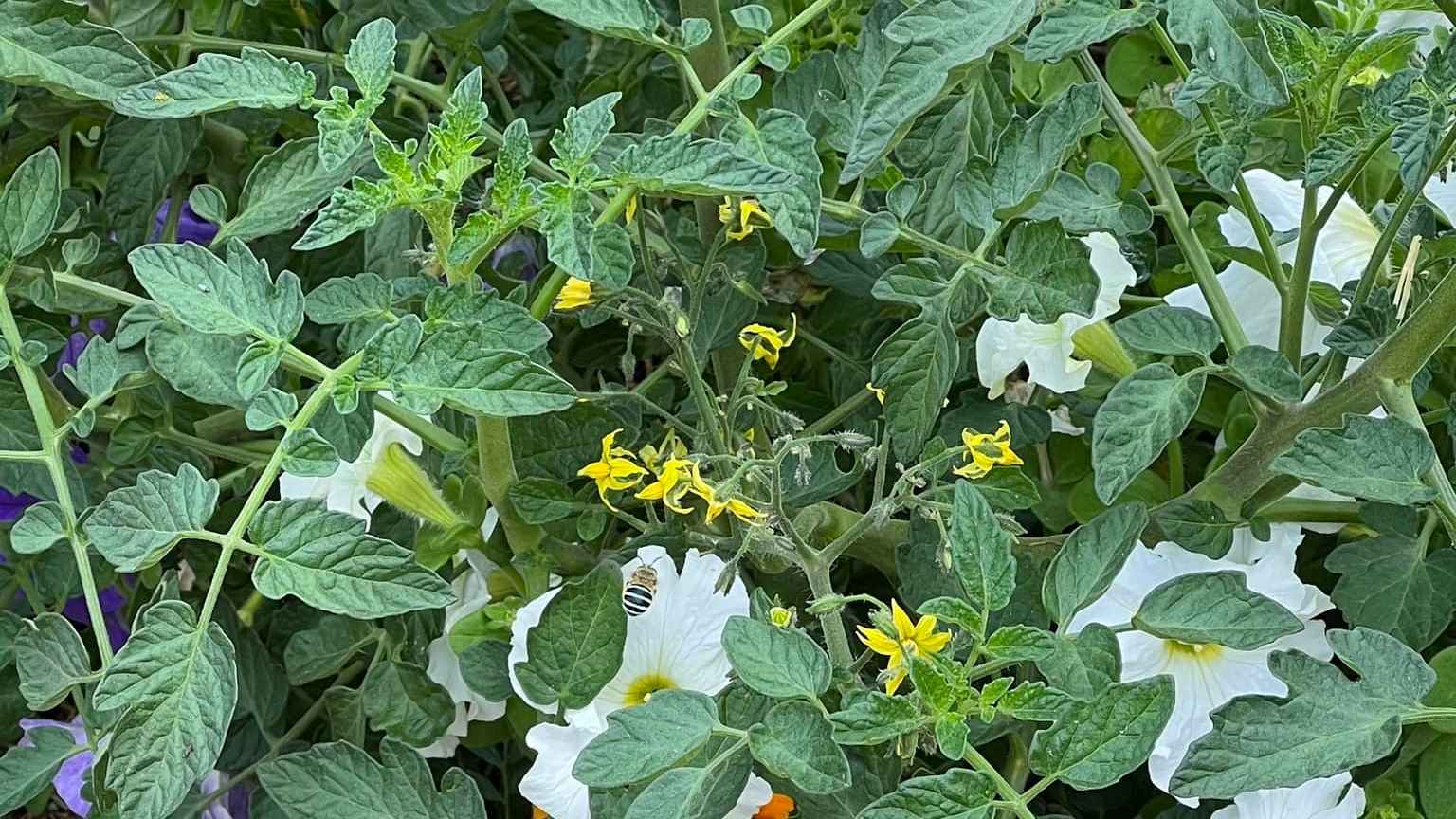
Instead of a tangle of vine-like growth and abundant leaves, Gondwana plants are compact and sturdy, reaching around 60 cm high in my country garden in north central Victoria but up to 1 m high in Patrina’s garden. These plants don’t waste their energy on excess leaves or growth! Plants can be easily trained with one simple timber stake with soft fabric ties around the main stem and the stake. The fruit to plant ratio is rewarding, with nearly half the plant material being fruits.
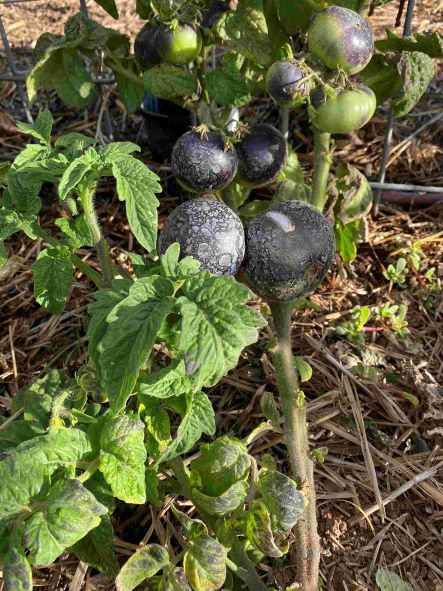
Here’s the range of Gondwana goodies:
Gondwana Lava has dark purplish-red fruits with green-gold stripes, and when cut open is dark purple-red and has green flesh around the seeds.
Gondwana Lightning is a pink-red tomato with purple-black streaks and thin gold stripes. When cut open it is bright red.
Gondwana Moon reveals a yellow interior when opened, and like other yellow tomatoes has a tangy citrusy flavour with a touch of umami. If fruits are subject to intense sun, they turn more purple-black on the outside.
Gondwana Rose and Gondwana Thunder are very similar. They both have medium sized fruits with purple-black areas where the sun falls, but Gondwana Rose is rose pink highlights and Gondwana Thunder has darker and duskier pink-purple highlights.
The wild card…
Wild Fred is one other DTP tomato I am really in love with. The larger, flatter shaped red fruits have enough purple-black blush to look and taste good. Wild Fred fruits have a fantastic depth of flavour, growing on a compact plant. Being larger fruits, they are prone to cracking, but this can usually be prevented by mulching and regular watering, to keep soil temperatures and moisture levels stable.
So where can I get them?
Gondwana seeds:
- Contact Patrina Nuske-Small at [email protected]
- Tasmanian Natural Garlic & Tomatoes
- In 2022 I am hoping to offer seeds on my webshop
Dwarf Tomato Project Seeds:
More information
Dwarf Tomato Project – https://www.dwarftomatoproject.net/
‘Tomato know sow grow feast’ – buy online
.

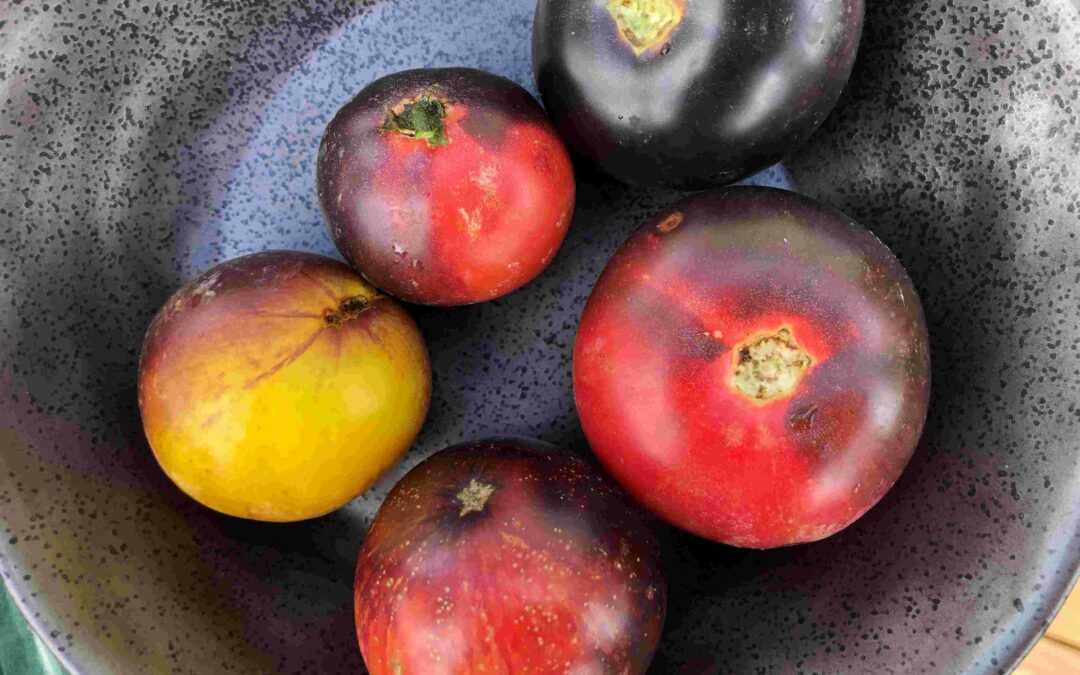
Recent Comments